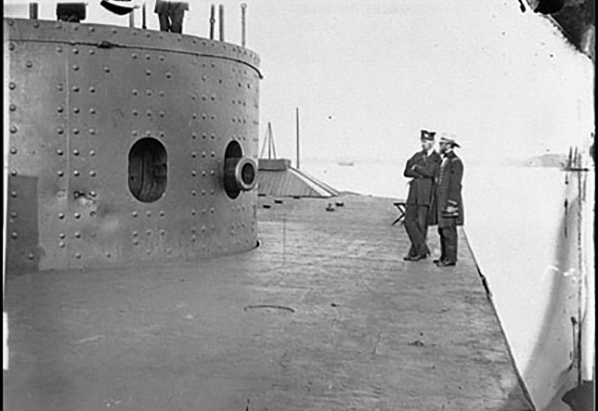
Monitor National Marine Sanctuary – A Maritime Heritage Site
Monitor National Marine Sanctuary – Bringing People and History Together to Preserve Our National Heritage
Though the US has had national parks since the 1870s, the National Marine Sanctuaries Act wasn’t established until a century later in 1972! Monitor National Marine Sanctuary (MNMS) became the first national marine sanctuary when it was established in 1975. Like many historical sites on the East Coast, MNMS is based on a battlefield—but not just any battlefield. Its namesake, the USS Monitor, was a history-making vessel in the civil war; however, the sanctuary is expanding to preserve relics from, and educate people about, the WWII Battle of the Atlantic, especially the ships and almost 1,600 men who were lost off the coast of North Carolina.
The Monitor in History
The sanctuary was founded to protect the shipwreck of the USS Monitor, the first armored ship designed and built by the Union during the Civil War. Firepower technology had evolved to the point where no practical wooden ship design could withstand it, so armoring ships with iron was the next advancement in naval warfare.
The Confederacy had started armoring the captured Merrimack (renaming it CSS Virginia), and the Union responded by pushing hard to get the Monitor constructed and engaged. In addition to the introduction of ironclad vessels, the Monitor had several other innovations. Among them, the shape of the ship was very unusual, and it was the first to have a rotating turret. It stood nine feet tall and was 20 feet in diameter and housed two Dahlgren guns (muzzle loading cannons).
The Monitor and Virginia fought the Battle of Hampton Roads on March 9, 1862, and the Monitor went on to participate in several other confrontations. In December of that year, it was being towed off the coast of Cape Hatteras, North Carolina and sunk during a storm.
It was not until 1973 that the sunken wreck of the Monitor was discovered, and documentation and recovery efforts began.
World War Two’s Battle of the Atlantic—Right off North Carolina’s Shores
Shortly after the bombing of Pearl Harbor in December of 1941, German submarines called U-boats began patrolling off of the coast of North Carolina. In January of 1942, they torpedoed a steam tanker about 60 miles northeast of Diamond Shoals, and by the end of the war dozens of vessels would be sunk off of North Carolina. Almost 1,600 men were killed, most of them merchant marines.
MNMS is playing a key role in the exploration of these shipwrecks, and creating memorials for the lives lost. A comprehensive study is being conducted to learn as much as possible from this underwater maritime museum.
Opportunities at MNMS
As a marine sanctuary, MNMS works to study and preserve the natural environment as well as this undersea historical resource. The Monitor itself is at a depth of about 240 feet under the sea, but visitors have many ways to learn more about it and the other shipwrecks in the sanctuary.
The Mariners’ Museum in Newport News, Virginia serves as the primary visitor’s center, and stops all along the Outer Banks Maritime Heritage Trail (outerbankstrails.org) off of the coast of North Carolina provide additional resources.
SCUBA diving allows visitors to see the shipwrecks in person, and MNMS has launched an exciting initiative to engage divers in the conservation of the wrecks and the artificial reef environments they create. It is called ANCHOR (Appreciating the Nation’s Cultural Heritage and Ocean Resources) and its mission is to “work in partnership with dive businesses and charter operators to reduce human impacts on shipwrecks and other maritime heritage resources.”
Volunteers are a vital part of the ongoing projects at MNMS, and there are a variety of opportunities to help out. Booths at community events are a fun way for socially-inclined volunteers to spread the word about the great work being done, and those who prefer something less outgoing are encouraged to help archive and organize research material, preserve photographs and conserve maritime artifacts.
Whatever your level of interest, there is something for you at MNMS, from learning about a particular aspect of naval war history to leaving your own legacy through contributing to the nation’s deepened understanding of the maritime heritage encompassed by the sanctuary. Contact us to find out about current activities and opportunities today at monitor.noaa.gov.
